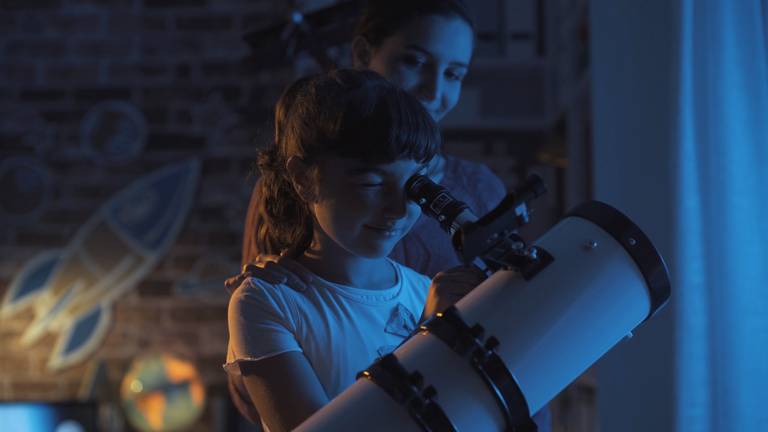The Constellations of Winter (December to February)

By now, the Big Dipper has moved around to the east of Polaris. Draw a line through Megrez and Merak and you’ll come to two bright stars. Known as Castor and Pollux, these are the brightest stars in the constellation Gemini, the Twins.
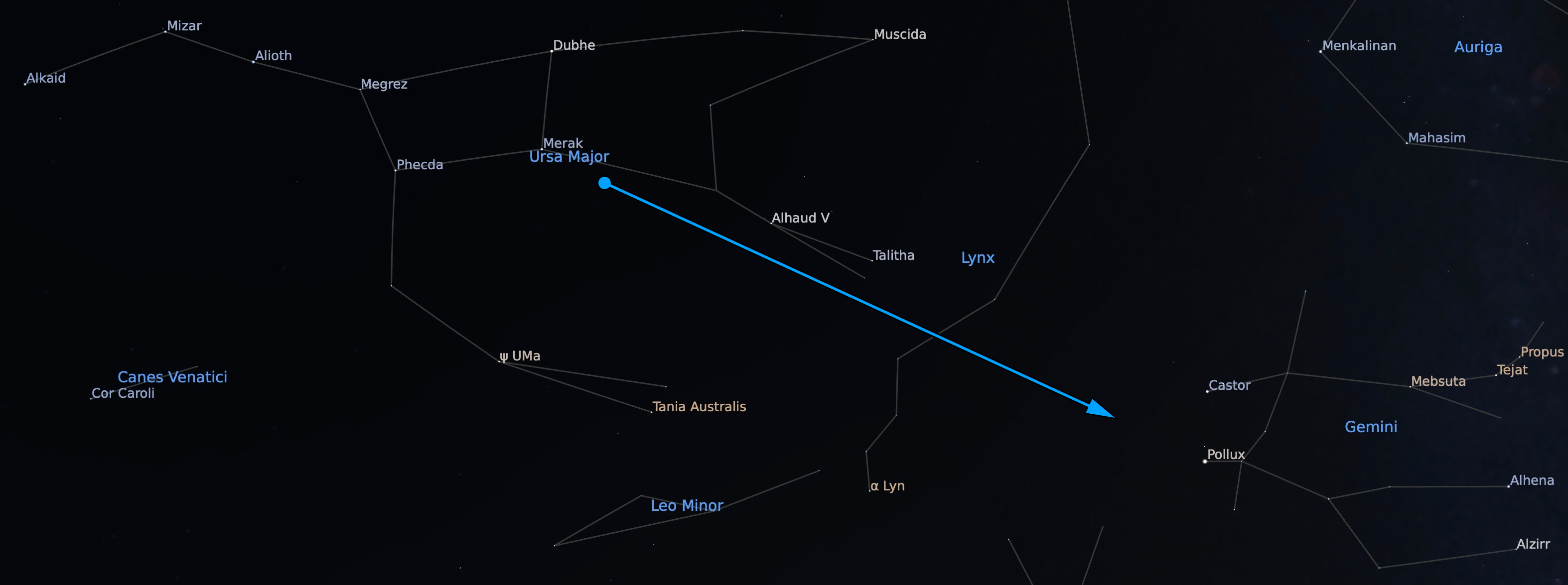
Yet we can also find Gemini another way. Like the Big Dipper, the constellation Orion, the Hunter, is very well known. And also like the Big Dipper, you can use Orion to find other constellations. Before we do so, take a look just under the three stars of Orion’s belt. There’s a faint star here, and if you live under dark skies, you might notice that it appears slightly fuzzy.
The Orion Constellation
This is the Orion Nebula, a huge cloud of gas and dust in space. A nebula is where stars are born, and the tiny star you see is just one of them. Look with binoculars and you’ll see more of the cloud, and another star or two. Look again with a small telescope and the sight will take your breath away.
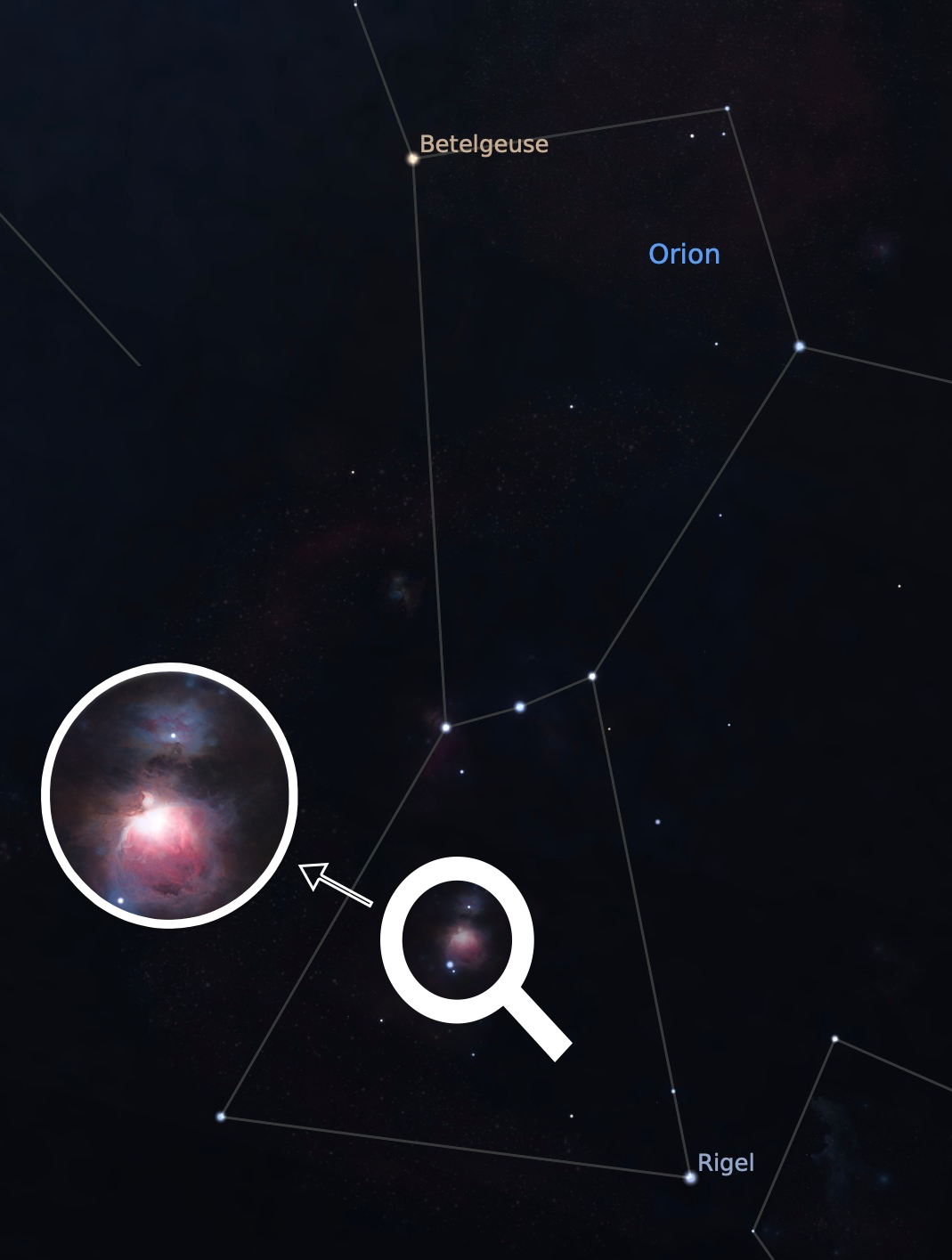
Now follow the three stars of Orion’s belt up towards the northwest and you’ll come to a bright, orangish star. This is Aldebaran, and it marks the red eye of Taurus the Bull. You may also notice that it’s on one tip of a V-shaped group of stars. Known as the Hyades, these stars look outstanding when viewed through binoculars.
The Pleiades Star Cluster
Continue the invisible line towards the northwest and you’ll come to a very small group of stars. This is the famous Pleiades star cluster. These stars are also a beautiful sight with binoculars, but the group is a little large for a telescope. Sometimes known as the Seven Sisters, most people can only see six stars with just their eyes. How many can you see?

Let’s go back to Orion. Follow the three stars of his belt down towards the southeast and you’ll come to Sirius, the brightest star in the sky. A double star system, it’s just 8.6 light years away, making it the seventh closest star to the Sun.
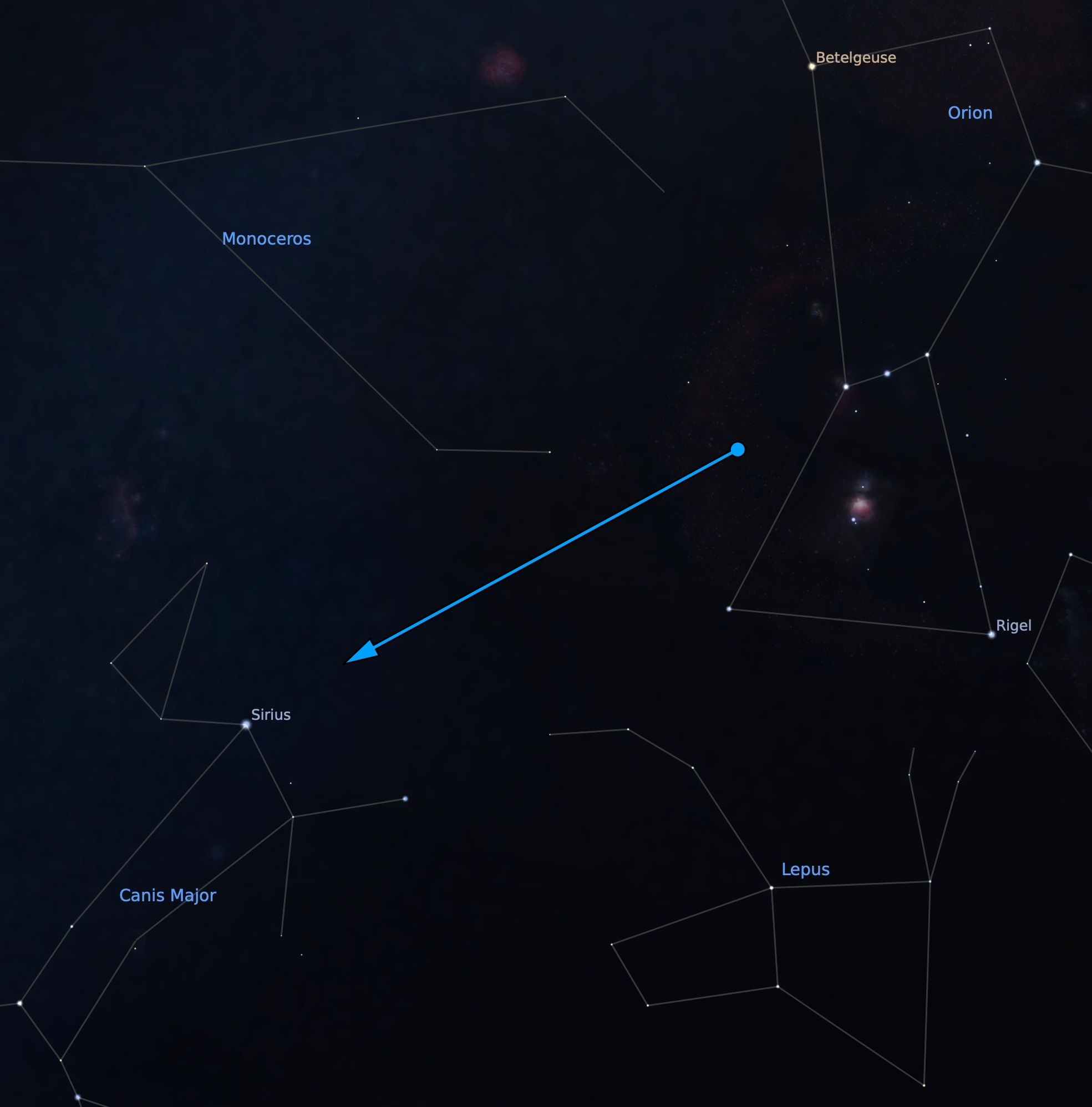
So how do you find Gemini using the stars of Orion? Draw a line through Mintaka, the western star in Orion’s belt, and Betelgeuse, the red supergiant star that marks his shoulder. Then head northeast to find the twin stars of Gemini.
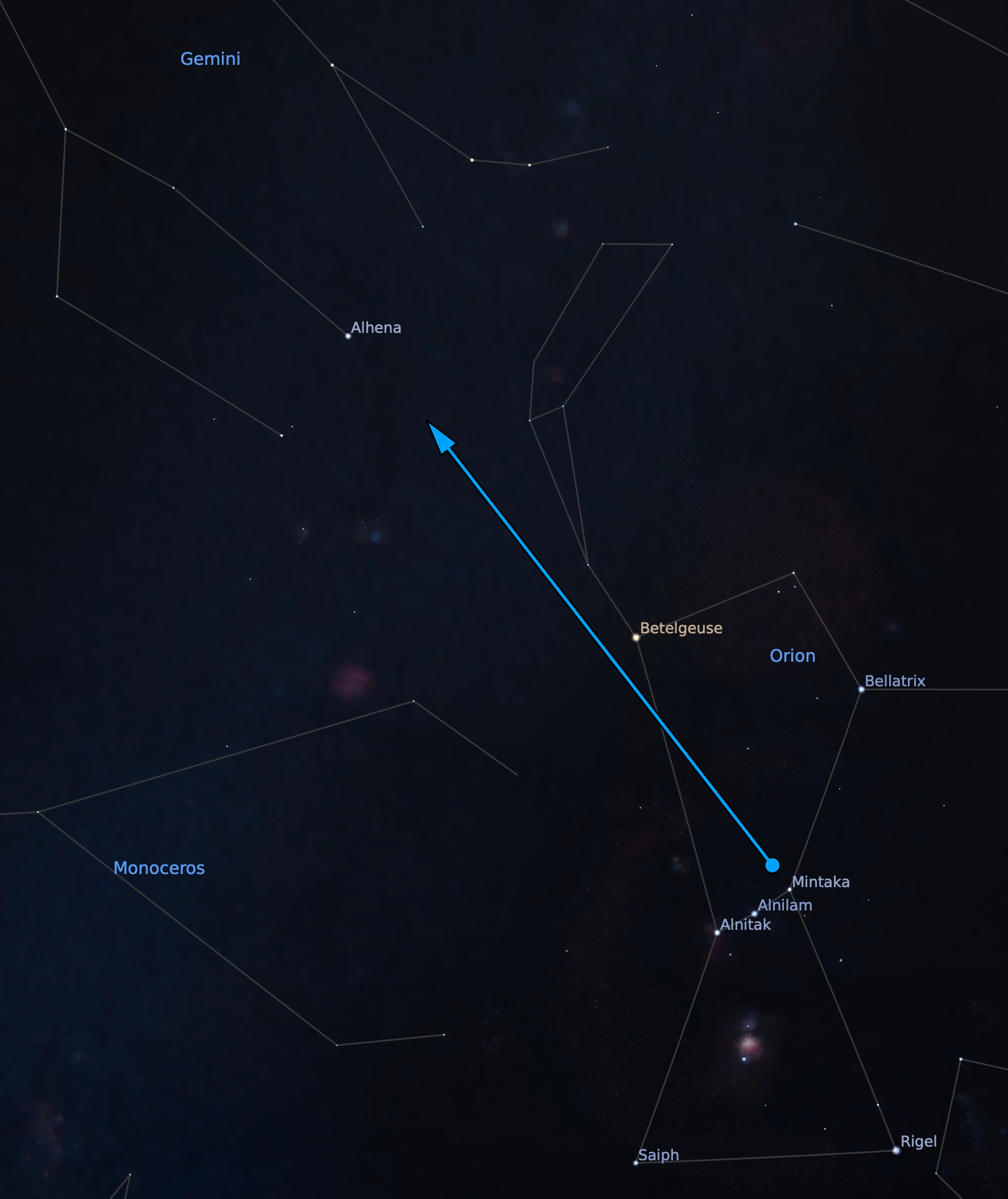
Gemini is home to the last major meteor shower of the year. The Geminids are at their best on the evening of December 13th, as the constellation is rising in the east. At their height, they can produce 120 meteors an hour—a spectacular and memorable end to our year under the stars!








